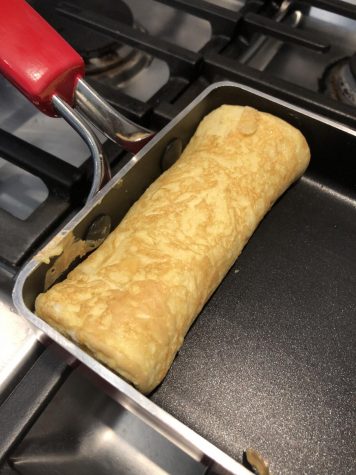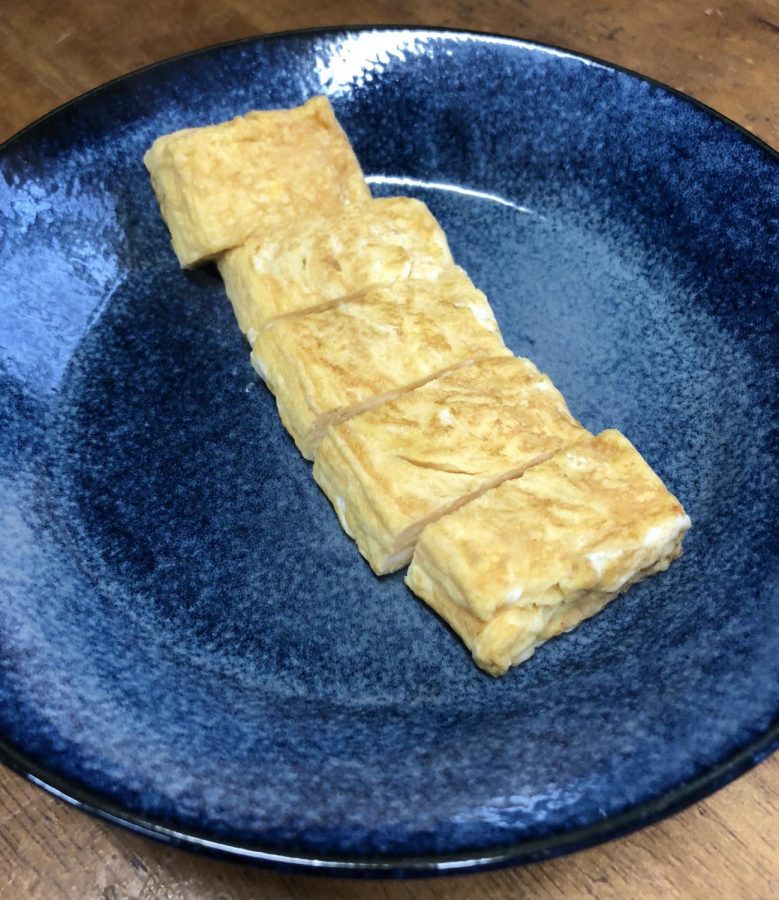Tamagoyaki
April 18, 2018
Thanks to Buzzfeed and the ever-increasing globalization of food traditions, you may have heard of this popular Japanese dish by its American name: rolled egg.
This sweet version of the traditional omelet is ubiquitous in Japan. Last February, I was lucky enough to travel to Japan with a few other THS students. We started off in Tokyo and traveled to Nagoya, then Toyokawa for our homestay. Everywhere we went Tamagoyaki seemed to be a breakfast staple. In Toyokawa I was lucky enough to learn how to make it from scratch. The first thing I did when we got back to Nagoya was hit the nearest mall to buy my own egg pan to take back to the U.S.
Tamagoyaki is made with eggs, sugar, soy sauce, mirin, and dashi. For those of you unfamiliar with mirin and dashi, mirin is essentially a sweeter version of sake with less alcohol (ideal for cooking) and dashi is a type of fish stock, made with kelp. My host mother used an instant variety, which comes as a dry solid. Both ingredients can be found online, or in specialty stores like Mitsuwa in Edgewater. I’m pretty sure Whole Foods carries them too. Usually, Tamagoyaki is made in a special square-shaped pan. If you don’t have one, you can buy one on Amazon, or make do with a normal 9-inch pan (this video has English subtitles).
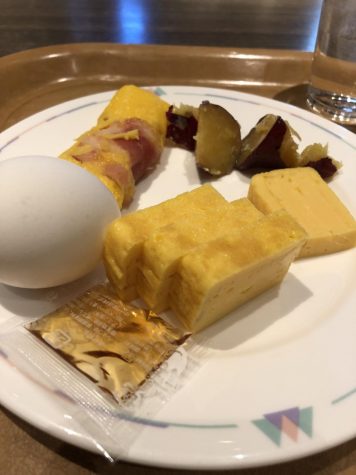
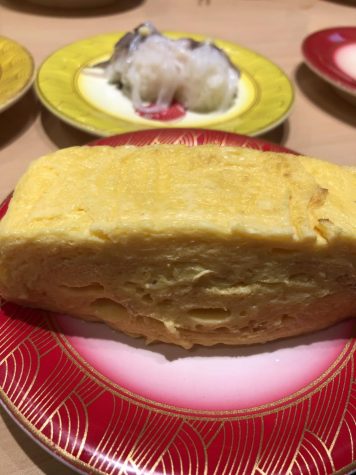
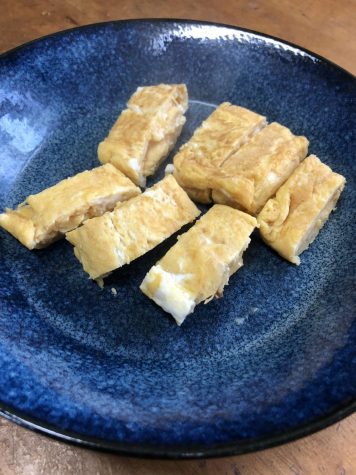
There are a few ways to make Tamagoyaki. My host mom made the fast version, which takes only 4-5 minutes, but the traditional way is to make it on extremely low heat and cook the egg very slowly. The difference is in the outer layer: the fast way gives the outside of the egg a bit more of a brown. Below is the recipe for the fast morning version.
Ingredients:
2 eggs
1/2 tsp dashi
1 tsp soy
1 1/2 tsp mirin
1 tbsp sugar
extra light olive oil
chopsticks
Instructions:
1. Heat your pan on medium.
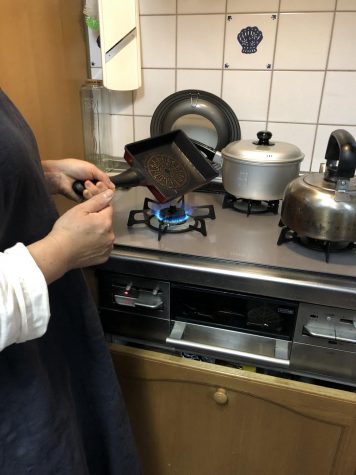
2. While your pan heats up, combine eggs, dashi, soy, mirin, sugar and olive oil in a small bowl. Stir vigorously with chopsticks (traditional) or a fork as you would for scrambled eggs.
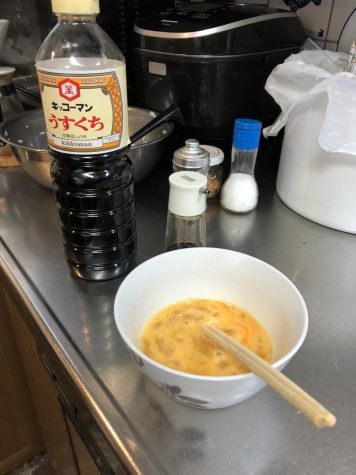
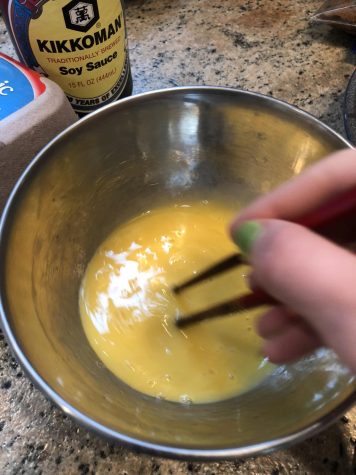
3. Add about a tsp of oil to the pan, then pour the contents of your bowl into the pan. While egg sets, gently stir the egg around with your chopsticks to aerate it.
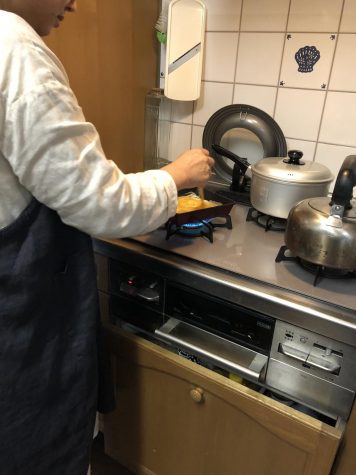
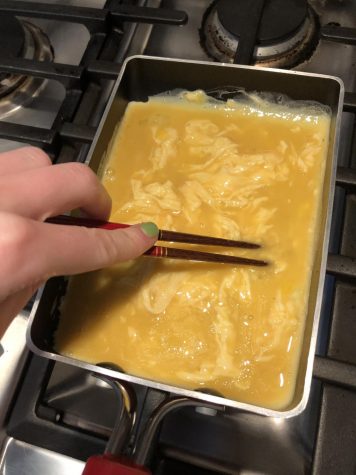
4. Once your egg has set, use a spatula to lift about an inch of one of the sides and fold it over toward the opposite end. Press down on the fold, allow egg to set and repeat this step until you reach the opposite end of the pan.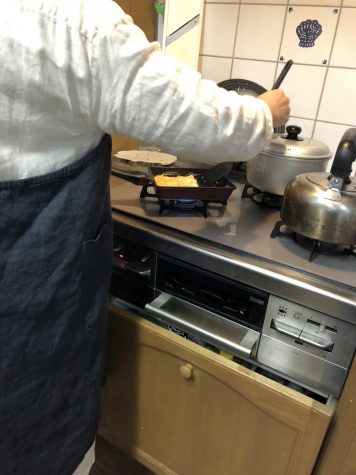
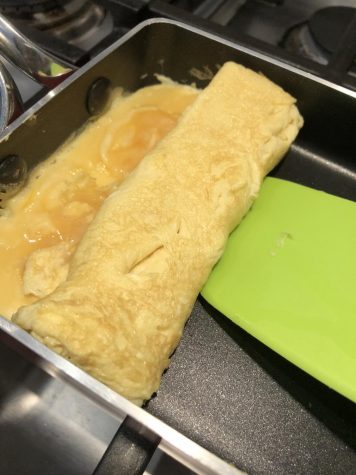
5. Press the sides of the folded egg to create a rectangular prism shape. Slice and serve immediately.
